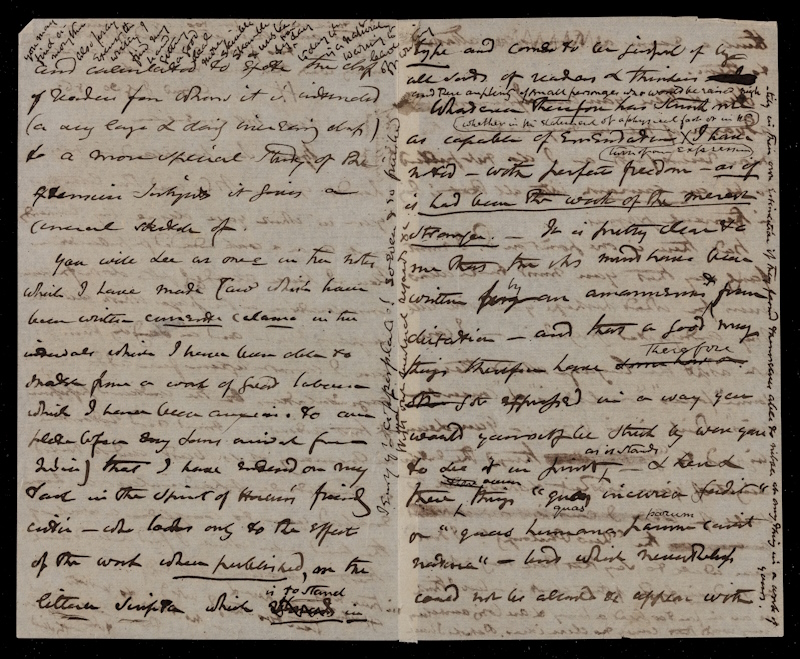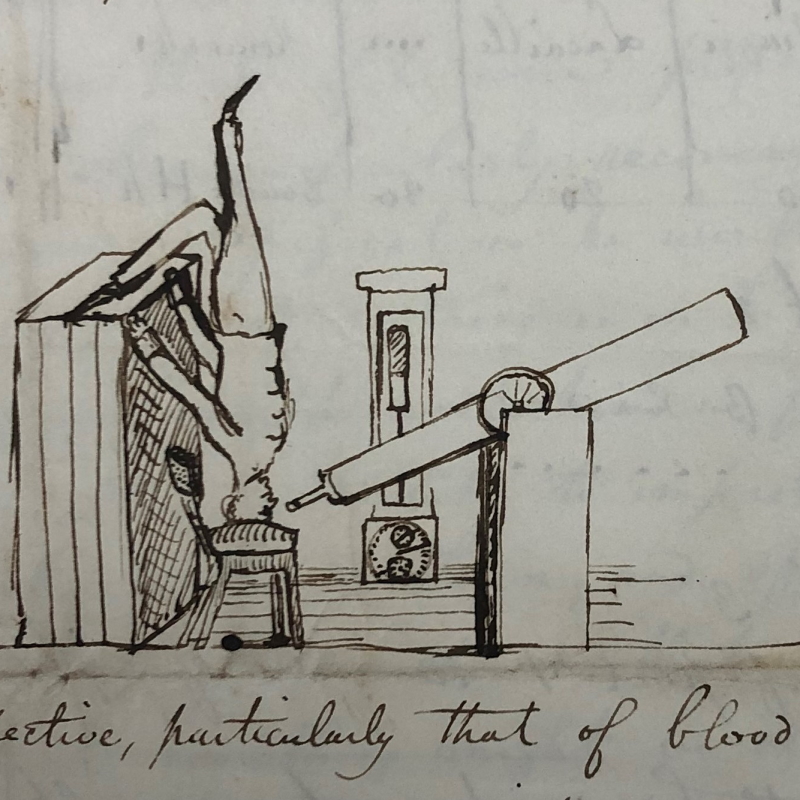Louisiane Ferlier launches the letters of Sir John Herschel on the Royal Society's Science in the Making platform.
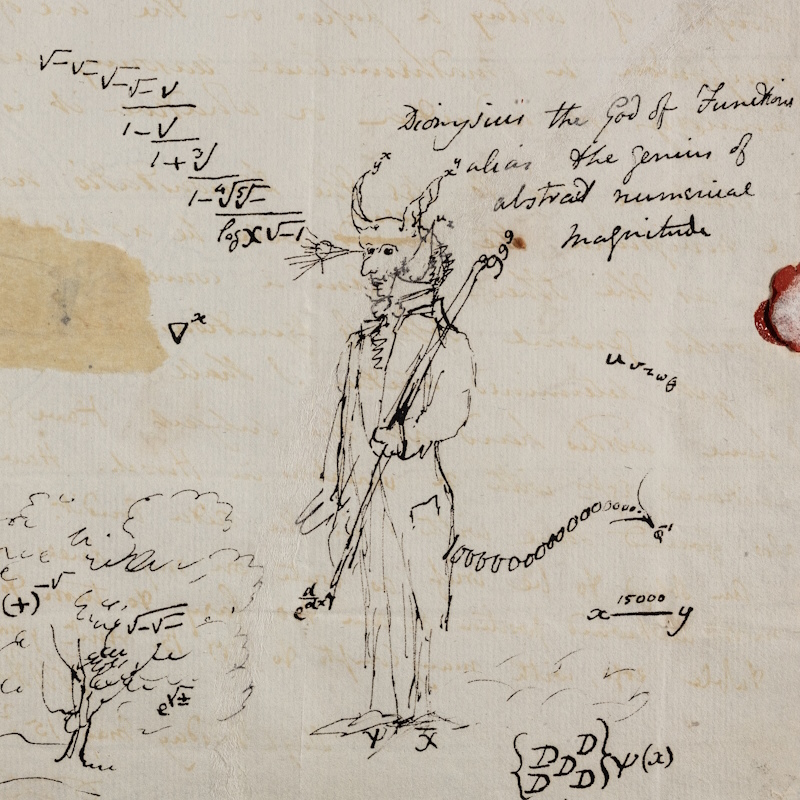
I’m delighted to launch today the letters of Sir John Herschel on our Science in the Making platform. As Eloise Barber discussed earlier this week, this project has been a fascinating venture into the interdisciplinary world of the Herschel family for the Library team, and with over 10,900 letters, it has kept us busy for some time.
A lot of my work on the project has been to turn the database created by the successive teams of the Herschel Calendar project who have listed the correspondence across all collections, into archival entries for our letters. This may sound straightforward, but in addition to amounting to a massive (and somewhat tedious) data clean-up exercise, it taught me that what researchers consider to be a letter is different from how manuscripts might be viewed in an archival context.
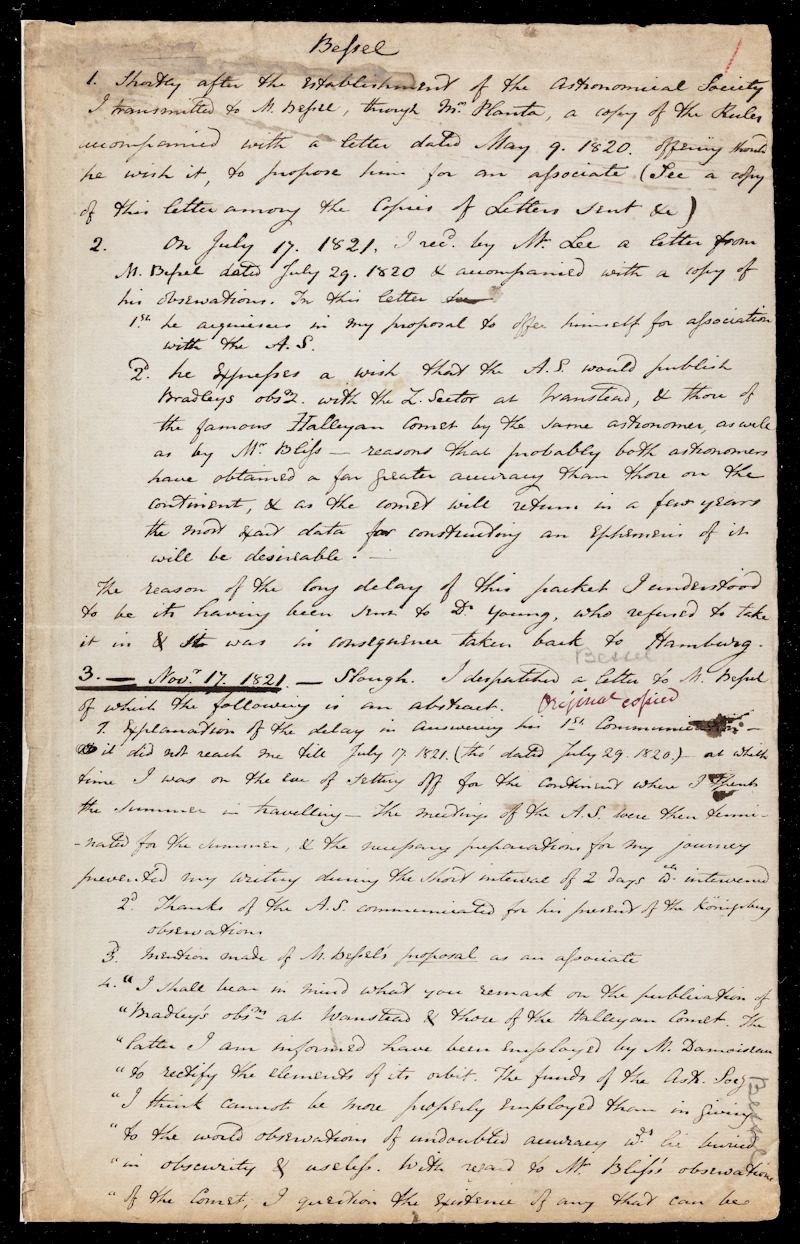
For instance, in this list of letters (above) created by Sir John Herschel to record the history of his exchanges with German astronomer Friedrich Wilhelm Bessel ForMemRS, the Calendar researchers recorded each letter mentioned as a single entry; while we consider the actual manuscript as a single item and describe its content. For the academics, what mattered was to create data for every letter, while for us the manuscript itself is prime, revealing as it does how Sir John Herschel managed the flow of letters.
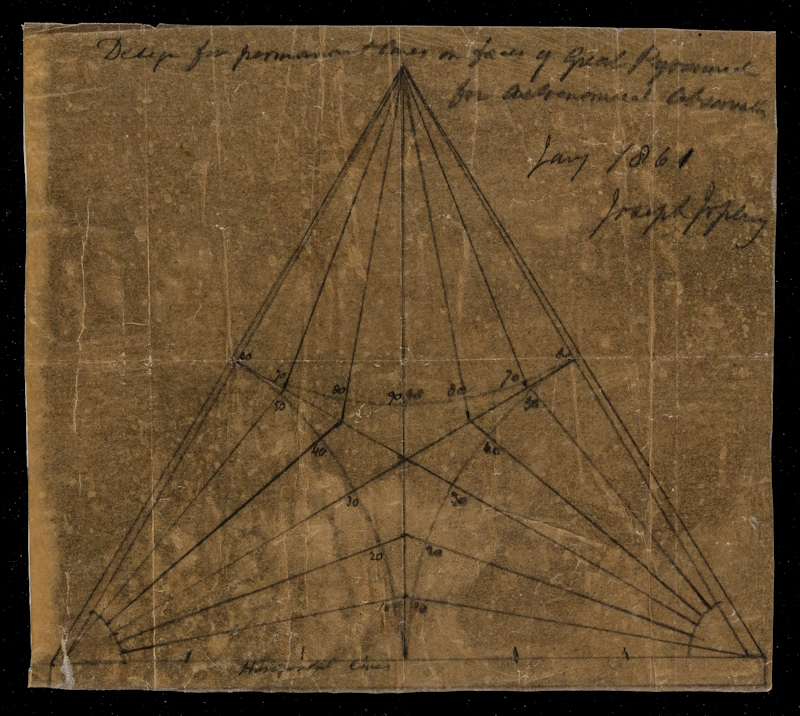
Most importantly, over 400 manuscripts have been described for the first time because the Calendar project did not consider them as Sir John Herschel letters. These included letters from and to Margaret Brodie Herschel, demonstrating her crucial role in managing the scientific correspondence of her husband. They also feature many of the enclosures that had originally been with the letters. And so, I’ve had tremendous fun digitally reuniting drawings with letters, such as the schematics of the Great Pyramid of Giza (above), from a little known engineer who sold 3-D models from his home, Joseph Jopling (1788-1867), or this treatise by one of Charles Darwin’s cousins, Frances Jane Hughes (1806-1894), which includes her unique take on the theory of evolution and its origins.
My colleague Hirra Ateeq, who helped with the final cataloguing push ahead of the launch, also got to go through the affidavits Herschel retained in the unsuccessful case brought by William Henry Fox Talbot FRS (1800-1877) against James Henderson, a studio portrait photographer, for infringing his calotype patent. This connects Herschel’s correspondence to that of Henry Fox Talbot, in which you can read a distraught letter from Henderson, appealing to the generosity of his unsuccessful accuser to grant him more compensation than the court had.
Early on, I was struck by the geographical spread of the correspondence. Unsurprisingly, it highlighted the constant dialogue that connected Herschel to women and men of science in Britain and Europe; but its reach was truly global, following the colonial routes of Victorian science from the Cape Colony (South Africa) to India, by way of Singapore and Sierra Leone. I thought, quite foolishly therefore, that it would be a wonderful idea to geotag every letter so that we could produce a map of the correspondence. In the process, I tested ChatGPT’s ability to find the addresses and, because it is not trained on historical data, discovered very quickly that it was hallucinating many of the historical addresses, or just acknowledged its own limitations, and therefore that none of its data was usable. Thankfully, I had help from real-life cataloguer Vida Milovanovic, who can now tell you exactly where Goodrest Lodge, near Reading, was in 1829, following the digital breadcrumbs of the letters written from the address and news of the demolition of the building.
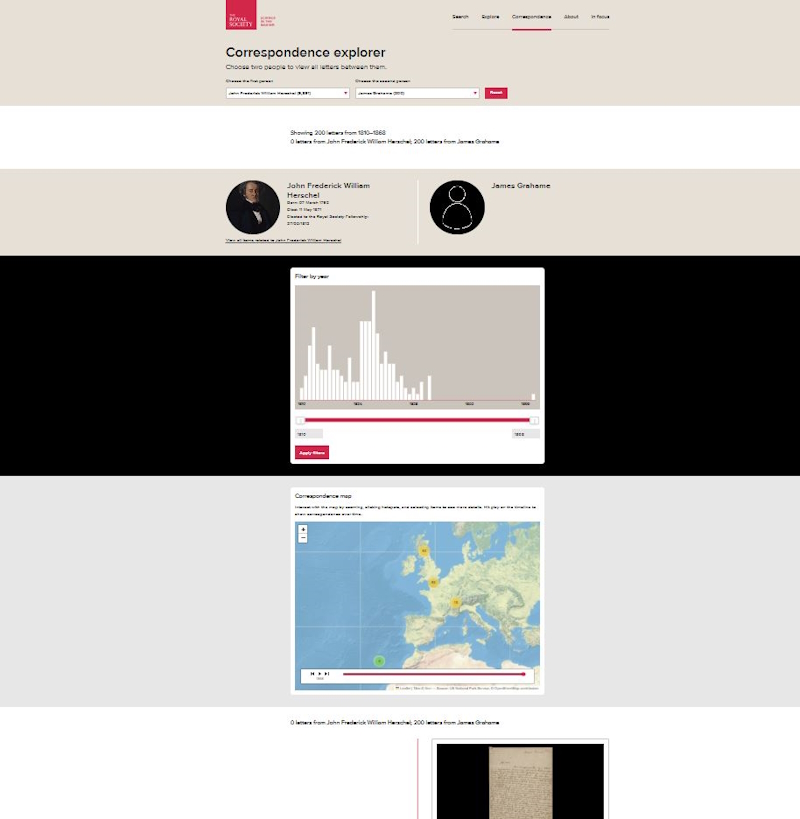
The result of our combined efforts and the great work of the Cogapp team is an interactive map of the correspondence that you can view on the Science in the Making collection page. To my knowledge, this is the first geography of Sir John Herschel’s correspondence, and all the data we’ve created should also mean that it’s now really straightforward to analyse and visualise various aspects of the correspondence. I may even try myself, if I have a spare minute.
For less nerdy users, we’ve also created a new way to navigate through correspondence on Science in the Making: using our correspondence explorer you can pull any two correspondents together, view the personalised map of their letters and access a timeline of all letters with contextual information.
I am very proud of what we’ve achieved, thanks to a generous grant from the Charles Hayward Foundation, the support of our advisory board and the hard work of everyone who has helped, in particular Carolin Lange, who throughout her PhD placement has helped improve the project and whose In Focus piece on photography in the correspondence is an excellent way into the letters.
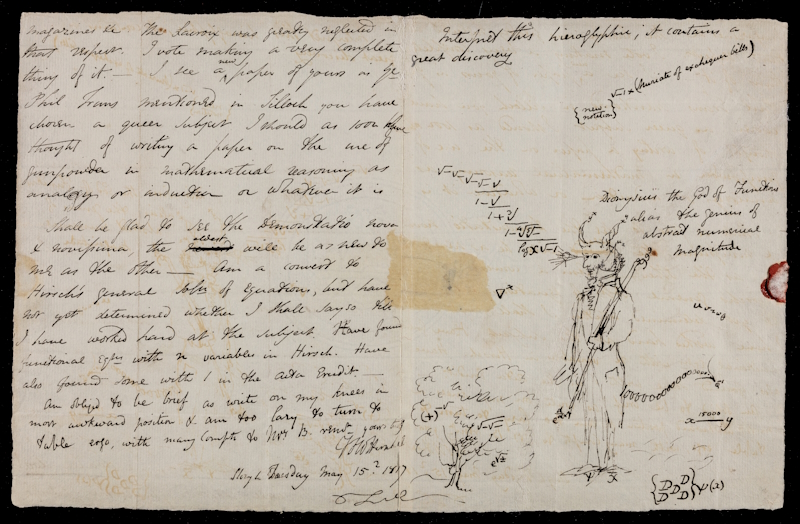
As always, digging through the archives turned up gold, so let me add just a few of the gems I noted along the way: Dionysius, the God of Functions, showcasing Herschel’s humour and skills as a doodler (above); the fascinating and detailed exchange of letters with Julia Margaret Cameron which capture her very early photographic experiments (below); a strange hexameter to Mary Somerville; and a discussion on Australian Aboriginal culture with Redmond Barry, President of the 1866 Exhibition Commission.
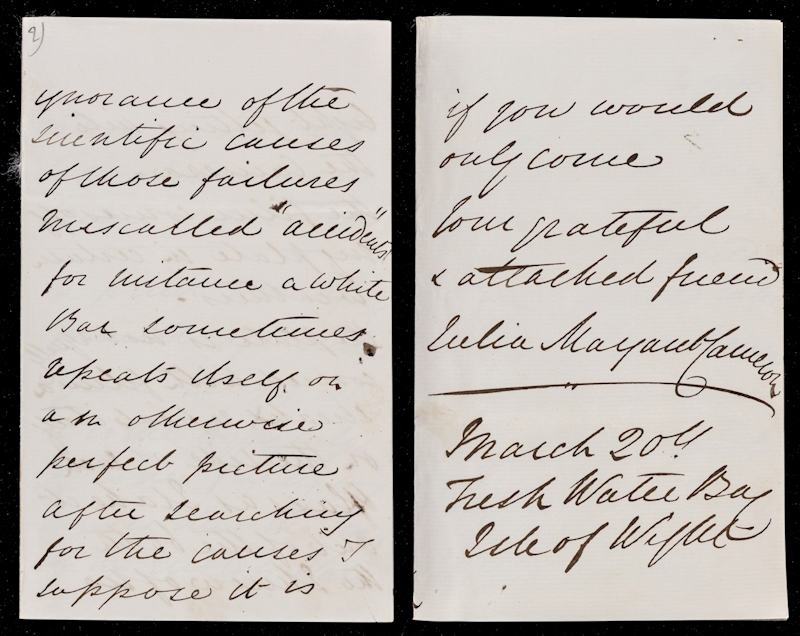
I hope you’ll forgive my slightly-longer-than-courteous blogpost, but there’s so much to tell. I shall close fittingly with Herschel’s own words of warning (from the letter shown below):
‘Excuse the writing I find my hand getting a good deal more skimble skamble & unsteady from day to day it is a natural warning to leave off writing.’
